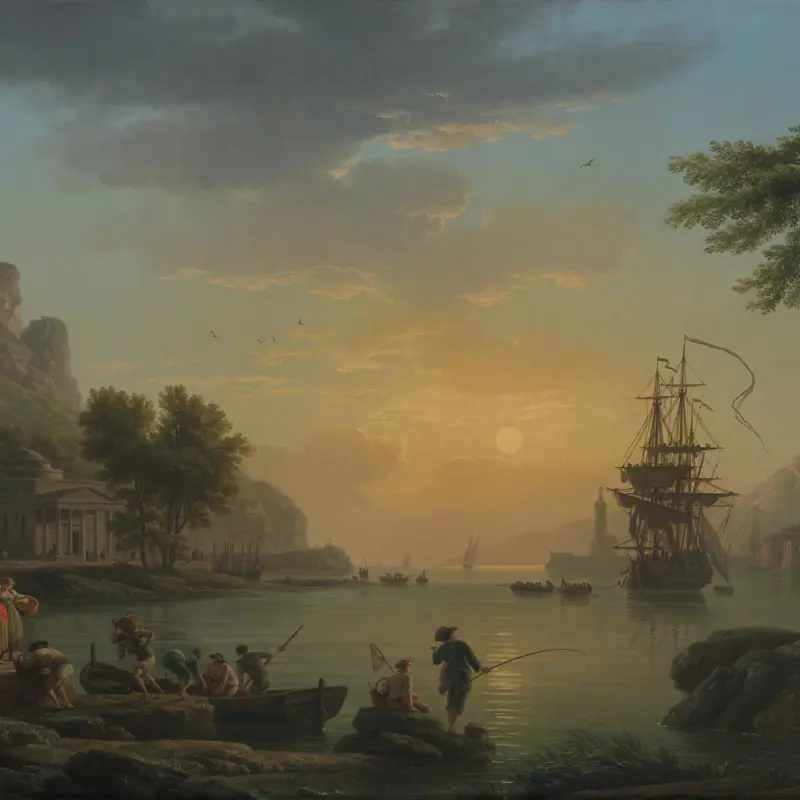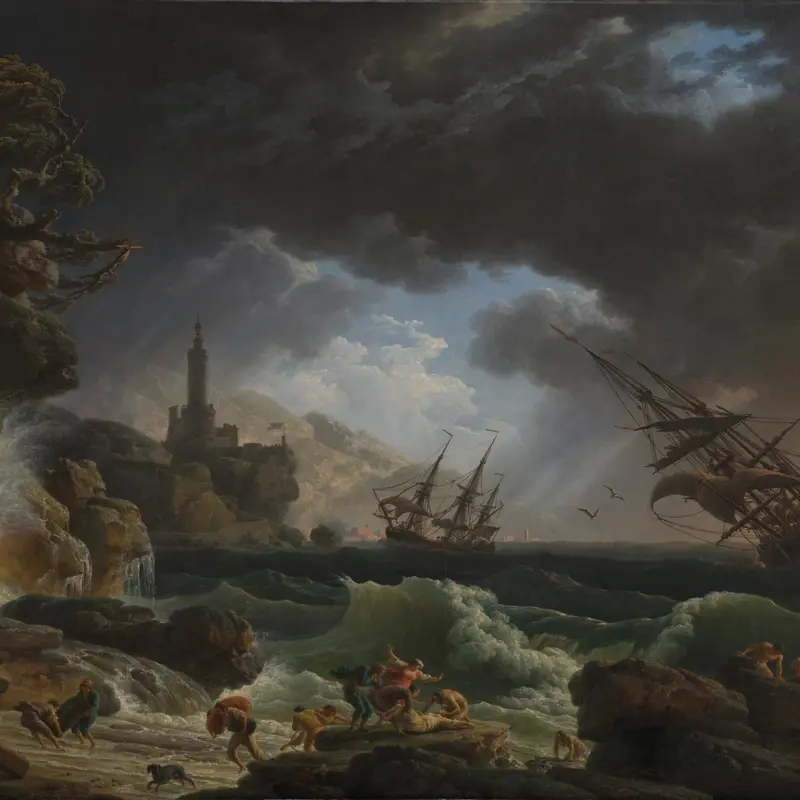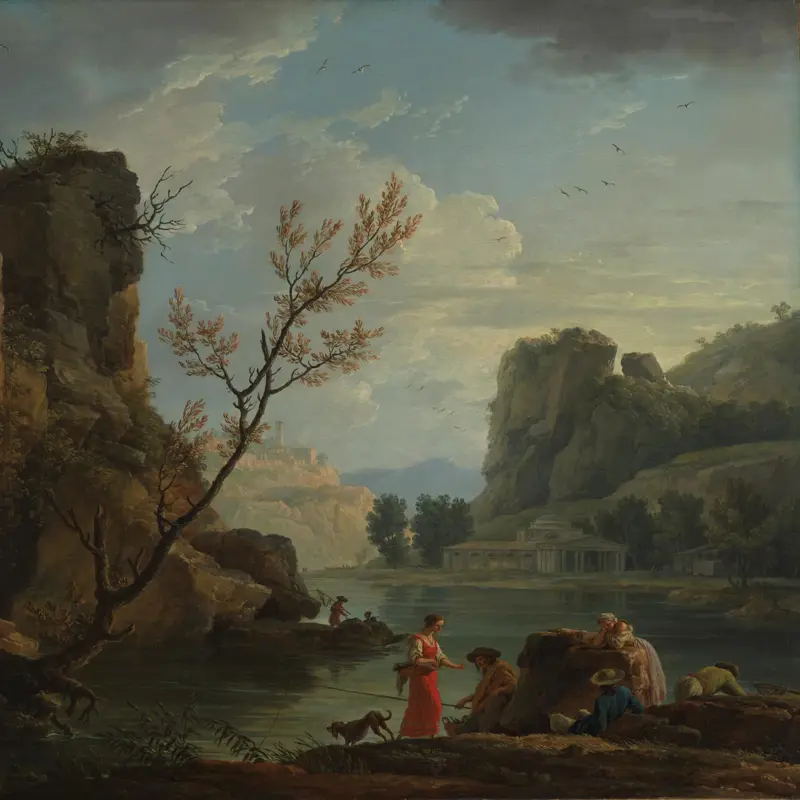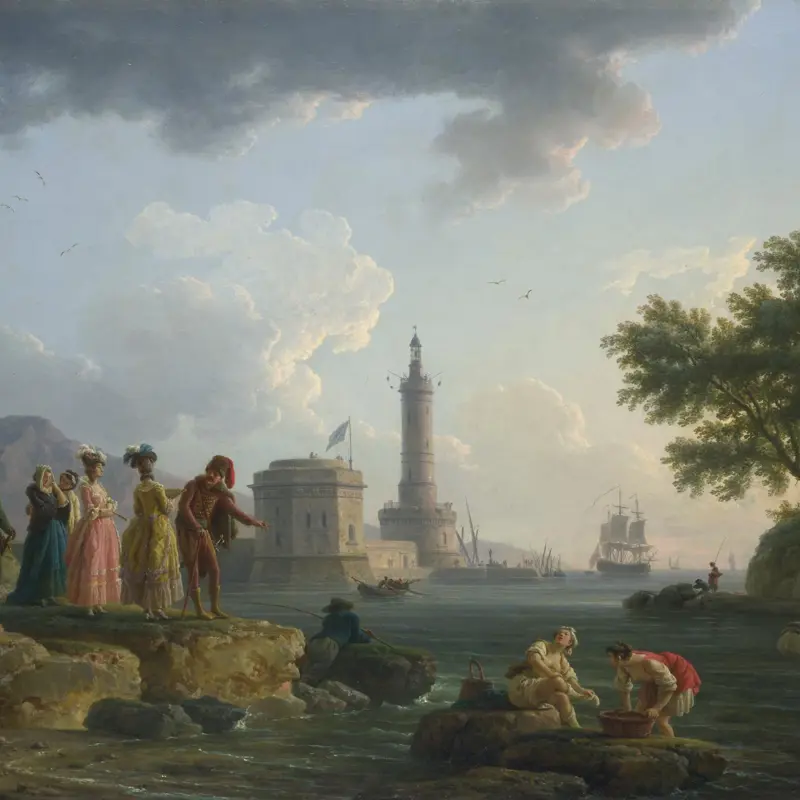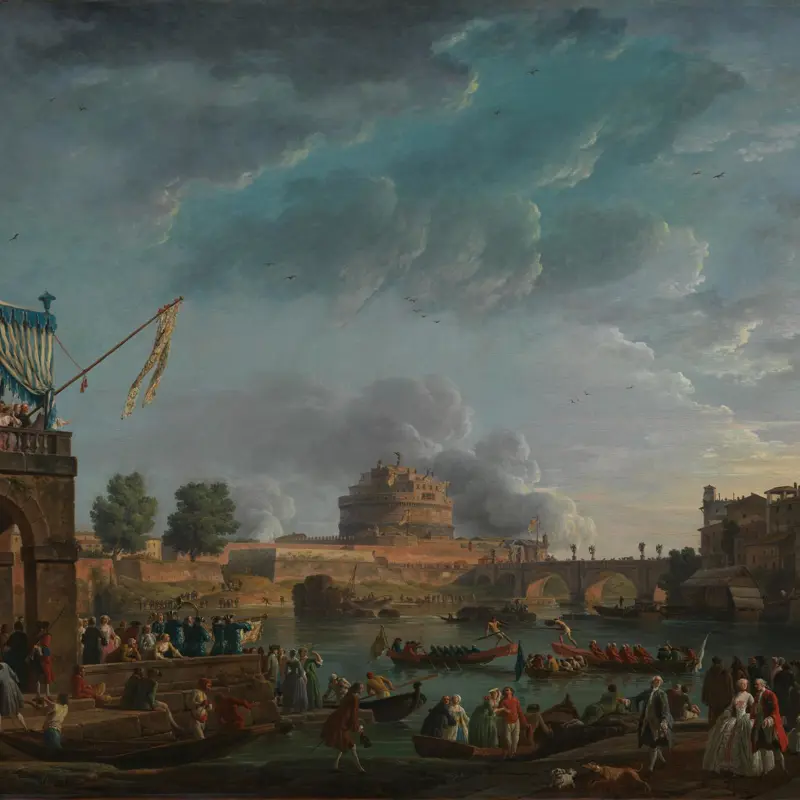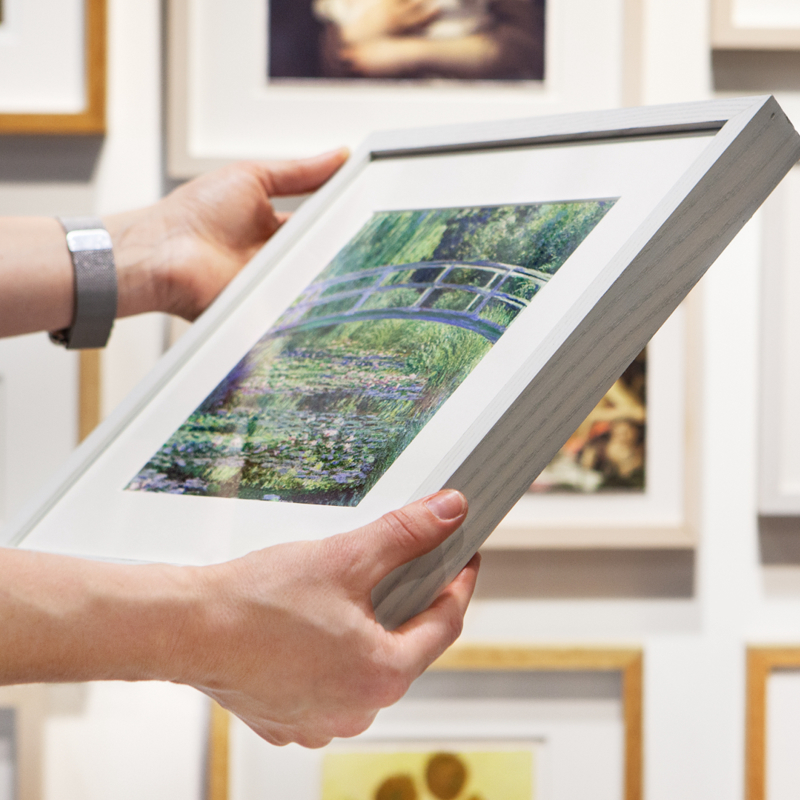Claude-Joseph Vernet, 'A Landscape at Sunset', 1773
About the work
Overview
This is one of two paintings originally commissioned as a pair by Stanislas Augustus, King of Poland, in June or July 1772. However, concerned that the King was slow to pay, Vernet instead sold the pictures to the British officer and East India Company official Lord Clive (known as Clive of India).
This painting, originally known as ‘Calme’, was painted first. It shows an imaginary harbour as fishermen return with their catch on a tranquil summer’s evening. The golden setting sun is at the centre of the composition above the misty horizon, its light illuminating the undersides of the clouds and reflecting off the ripples on the calm sea. A ship has just arrived – it is just possible to make out the tiny figures on its mast yards furling the sails – and is being towed by two launches into the harbour.
‘Calme’ and its pair ‘Tempête’ are two of Vernet’s greatest marine paintings, and the only great pair of marine views by him in a British public collection.
Key facts
Details
- Full title
- A Landscape at Sunset with Fishermen returning with their Catch ('Calme')
- Artist
- Claude-Joseph Vernet
- Artist dates
- 1714 - 1789
- Part of the series
- Two Landscapes: A Sunset and a Storm
- Date made
- 1773
- Medium and support
- Oil on canvas (unlined)
- Dimensions
- 114.5 × 163.5 cm
- Inscription summary
- Signed; Dated
- Acquisition credit
- Acquired with a donation from the American Friends of the National Gallery, London, made possible by a gift from David H. Koch, 2004
- Inventory number
- NG6600
- Location
- Room 35
- Collection
- Main Collection
- Previous owners
- Frame
- 18th-century French Frame
Provenance
Additional information
Text extracted from the ‘Provenance’ section of the catalogue entry in Humphrey Wine, ‘National Gallery Catalogues: The Eighteenth Century French Paintings’, London 2018; for further information, see the full catalogue entry.
Exhibition history
-
2005Long Loan to David H. Koch (2005 - 2019)David Koch30 August 2005 - 25 October 2019
-
2016Long Loan to the Metropolitan Museum of Art (2016 - 2017)The Metropolitan Museum of Art4 August 2016 - 16 November 2017
Bibliography
-
2005National Gallery, The National Gallery Review: April 2004 - March 2005, London 2005
-
2018Wine, Humphrey, National Gallery Catalogues: The Eighteenth Century French Paintings, London 2018
Frame
This is an eighteenth-century French frame, made in the Louis XVI style for Vernet’s A Landscape at Sunset. Crafted in oak, it was originally water-gilt. Featuring a flat top fillet, it showcases the period’s iconic fluted hollow with acanthus-leaf corners, followed by a row of pearls, and a gilt frieze adorned with a lamb’s-tongue sight edge.
When Vernet sold A Landscape at Sunset and A Shipwreck in Stormy Seas to Lord Clive in 1773, he wrote to Clive and described the frames as being in ‘straightforward and noble taste’. He proposed to price them at no more than two hundred francs each. The frames were later restored in England, with the gilding entirely redone.
About this record
If you know more about this work or have spotted an error, please contact us. Please note that exhibition histories are listed from 2009 onwards. Bibliographies may not be complete; more comprehensive information is available in the National Gallery Library.
Images
About the series: Two Landscapes: A Sunset and a Storm
Overview
These two paintings, originally known as ‘Calme’ and ‘Tempête’ (Calm and Storm), were commissioned as a pair by Stanislas Augustus, King of Poland, in June or July 1772. However, Vernet instead sold them to the British officer and East India Company official Lord Clive (known as Clive of India), who had been impressed by two similar seascapes the artist had exhibited at the Paris Salon the previous year.
‘Calme’, which Vernet painted first, shows an imaginary harbour as fishermen return with their catch on a tranquil summer evening. ‘Tempête’ depicts a rocky shoreline buffeted by a violent sea storm. Two ships roll in the giant swell while another lies shattered against the rocks.
These are two of Vernet’s greatest marine paintings and the type of work for which he was most famous in his day. They are the only great pair of marine views by him in a British public collection.


